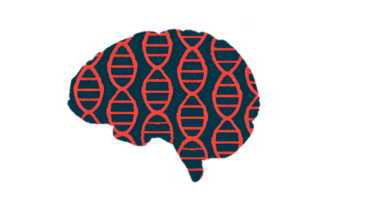Implantable scaffold aids insights into PPMS, treatment strategies
Researchers were able to block inflammatory molecules, easing severity in mice

Using an implantable scaffold to collect immune cells in mice, researchers have gained insights into the immunological mechanisms driving primary progressive multiple sclerosis (PPMS).
Based on the findings, the scientists developed a treatment strategy to block specific inflammatory molecules, which eased MS severity in the mouse model. The study, “Engineered immunological niche directs therapeutic development in models of progressive multiple sclerosis,” was published in PNAS.
PPMS is a form of MS wherein symptoms gradually worsen from the disease’s onset, typically resulting in faster disability progression than other MS types. Only ocrelizumab (sold as Ocrevus and Ocrevus Zunovo) is approved to treat PPMS.
A major hurdle for developing PPMS treatments is that the disease’s biological underpinnings remain poorly understood. Like other types of MS, PPMS is marked by inflammation that damages nerve cells in the brain and spinal cord, but researchers haven’t pinpointed what types of cells and signaling molecules drive this inflammation, largely because brain and spinal cord biopsies can’t be taken from living patients to know what’s happening as the disease progresses.
“Right now, we simply can’t get access to diseased tissue from MS patients in any regular way. Some patients donate brains after death, but at that point the disease has progressed quite far,” Aaron Morris, PhD, co-author of the study at the University of Michigan, said in a university news story.
Creating an alternative inflammation site
To better understand these disease-driving mechanisms, researchers studied mice with experimental autoimmune encephalomyelitis (EAE), a disease often used to model MS in humans. In EAE, mice have an immune response against a brain protein called MOG that triggers MS-like symptoms.
Rather than look at the activity of immune cells in the mice’s brains, the researchers implanted a scaffold under their skin that served as an alternative site for inflammation; as immune cells attacked the brain, they also attacked the scaffold, which could be collected and the cells analyzed.
“The scaffold provides an unprecedented ability to track disease dynamics and to investigate the underlying mechanisms, particularly at early stages. Therapies targeting these early mechanisms can halt disease progression before significant tissue damage,” said Lonnie Shea, PhD, another study co-author at the University of Michigan.
The analyses from the harvested scaffolds indicated the immune cells produced high levels of CC chemokines, signaling molecules that normally help sound the alarm to the immune system that something is wrong. In PPMS, the alarm gets overactive, triggering immune cells to attack healthy tissue.
“Overall, the [scaffolds] indicated a variety of CC chemokine signaling networks were dysregulated in EAE … and importantly, they did so without requiring the biopsy or harvest of a vital organ,” the researchers wrote.
Having identified CC chemokines as key players, the researchers tested whether these molecules might be targets for treating MS. For this, they created nanoparticles that block the activity of certain CC chemokines. The nanoparticles also were loaded with MOG, which is the brain protein the immune cells are attacking in EAE, to help the immune system tolerate the protein.
When PPMS mice were given the nanoparticles, the mice had far less severe symptoms. And when the nanoparticles were administered before EAE was induced, they didn’t develop symptoms at all.
“A single [nanoparticle] dose infused intravenously effectively treats EAE, with earlier administration associated with reduced disease burden,” the researchers wrote.
Analyses of cells from the mice indicated that immune cells from nanoparticle-treated mice had less inflammatory activity in response to the MOG protein, supporting the idea that this treatment reduced disease-driving inflammation. The researchers said this nanoparticle system could potentially be developed further to create new treatments for PPMS.






